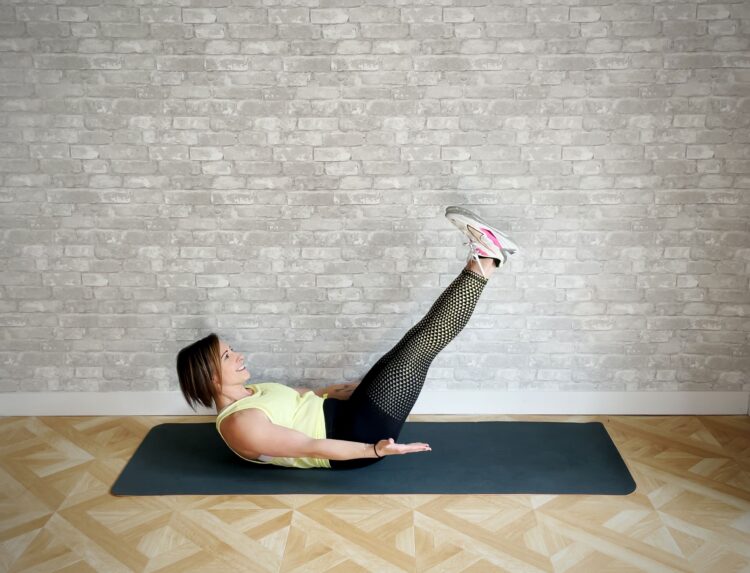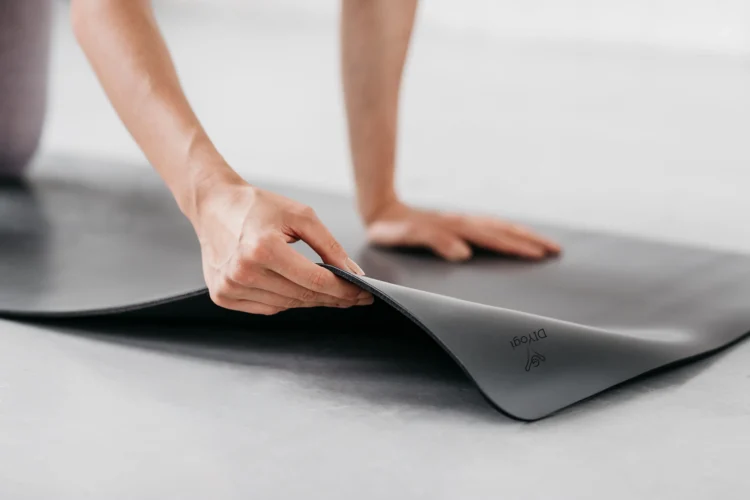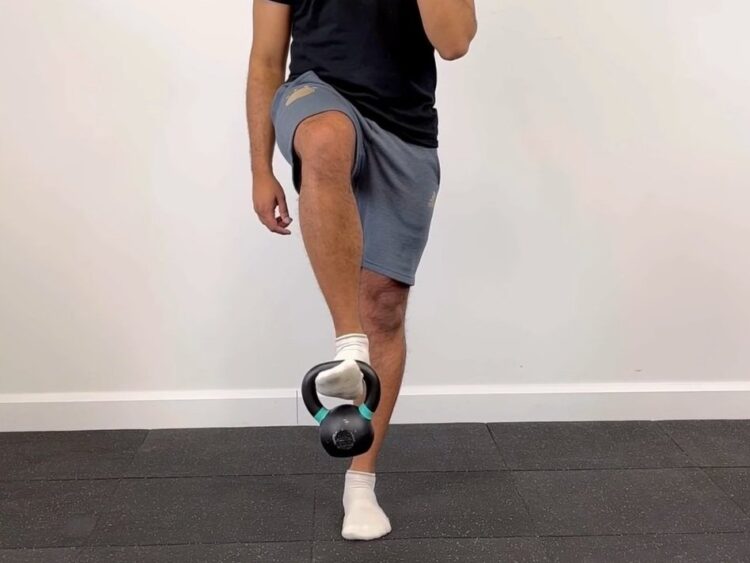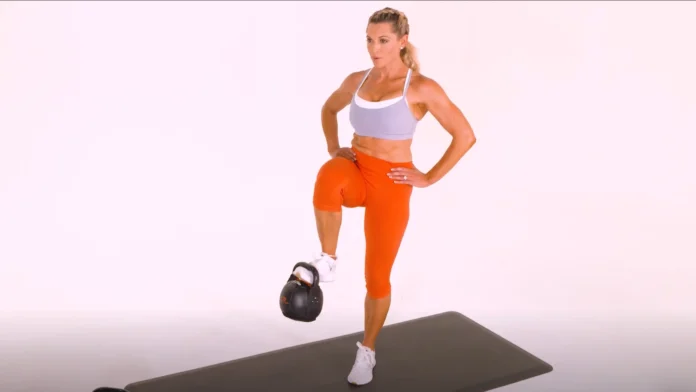Ready to improve your fitness? If you want a challenging yet satisfying workout, kettlebell leg lifts are for you. Dynamic routines aren’t just a strength test—they build core strength, defined legs, and stability.
Kettlebell leg lifts can benefit beginners and experts alike. In this article, we’ll reveal the secrets to mastering this workout. Grab your kettlebell, and let’s start this exercise journey!
What Exactly Are Kettlebell Leg Lifts?
They’re also known as “hanging leg lifts with a kettlebell.” These exercises involve lifting your legs while gripping a kettlebell between your feet. It’s not just about working those abs; it engages your hip flexors, lower back, and obliques. The kettlebell adds some resistance, which makes it fantastic for building core strength and stability.
How Do They Differ from Traditional Leg Lifts?

Regular leg lifts have you lying flat on your back, lifting your legs vertically without any added weight. Kettlebell leg lifts, on the other hand, require you to hang from a pull-up bar or some sturdy surface while holding a kettlebell between your feet. This variation cranks up the intensity, bringing more muscle groups into play making it challenging but highly rewarding.
Choosing the Right Surface for Comfort and Stability
Let’s talk about choosing a suitable surface for your kettlebell leg lifts. It’s essential to ensure both comfort and stability during the exercise. Your choice of surface can significantly impact your ability to maintain proper form and execute the movement effectively. Here’s a guide to help you out:
1. Exercise Mat
- Exercise mats are popular because they provide a comfy surface for lying down during exercise. They cushion your back and reduce discomfort during extended sets.
- To stay steady, ensure your exercise mat sits on a level and non-slip surface. This prevents it from sliding or bunching up during your workout.
- Because of their portability and lightweight, exercise mats can be taken along on trips to the gym or used at home.
2. Bench or Stable Surface
- Some folks prefer using a bench or a flat surface for kettlebell leg lifts. It can offer more stability and support, especially if you have lower back concerns or need a more excellent range of motion.
- Ensure the bench or surface you choose for the workout won’t move around or topple over. It needs to be spacious enough for your broad shoulders.
- Using a bench opens up possibilities for various exercises, like incline leg lifts, which target different muscle groups.
3. Hanging Bar or Pull-Up Bar
- Like the Captain’s Chair variation, a stable pull-up bar or hanging bar is a must for hanging kettlebell leg lifts. Ensure any padding on the bar is in good condition to avoid hand discomfort or blisters.
- The bar should be securely anchored to prevent accidents or instability while hanging. Follow safety guidelines when using hanging bars.
- Hanging variations add an extra dimension to kettlebell leg lifts, testing your grip strength and overall stability. These are suitable for advanced practitioners.
4. Floor Padding

- Consider placing a thick yoga or exercise mat under your lower back if you do kettlebell leg lifts directly on the floor. This offers cushioning and prevents discomfort.
- Ensure your floor surface is clean, flat, and non-slip. Using an exercise mat on the floor provides both comfort and stability.
5. Personal Preference
- The choice of surface comes down to what feels right for you. Experiment with different options to determine which suits you best and lets you do kettlebell leg lifts properly.
Remember that maintaining proper form during kettlebell leg lifts is crucial no matter which surface you go for. Keep your core engaged, your back flat against the surface, and your movements controlled. The suitable surface will support your efforts in perfecting this exercise while minimizing the risk of discomfort or injury.
Perfecting Technique
Perfecting your kettlebell leg lift technique is critical to reaping the full benefits of this challenging exercise. Here are the essential points to remember when you’re doing it:
- Begin by hanging from a pull-up bar or a firm surface: Make sure you’ve got a firm grip, and your body is straight with your arms fully extended.
- Position the kettlebell between your feet: Put the handle horizontally between your feet, ensuring it’s secure and won’t slip during the exercise.
- Engage your core: Tighten those ab muscles to support your lower back and stabilize your body.
- Begin the lift with controlled hip flexion: Use your hip flexors to raise your legs while keeping them straight and extended. Avoid using momentum.
- Maintain a neutral spine: Keep your back flat against your hanging surface to prevent excessive arching, which can strain your lower back.
- Lift your legs gradually: Raise your legs as high as you can while staying in control and maintaining proper form. Aim to bring them parallel to the ground or higher if possible.

Source: rehabhero.ca - Pause at the top: When you reach the movement’s peak, lift your legs to engage your core muscles even more.
- Lower your legs under control: As you lower your legs back down, do it with the same control and precision as when you lifted them, resisting any urge to swing or drop them.
- Breathe rhythmically: Inhale as you lower your legs and exhale as you lift them, coordinating your breath with the movement.
- Quality over quantity: Start with a manageable number of repetitions and prioritize nailing the proper form over the number of reps. As you progress, gradually crank up the intensity.
- Avoid swinging: Don’t rely on momentum or swing your body to lift your legs; it can strain your lower back and diminish the effectiveness of the exercise.
Wrap up
You’ve perfected kettlebell leg lifts to build a stronger core, sculpted legs, and stability. Though complex, this exercise has several benefits that redeem it. Be patient as you apply these strategies and techniques. Take time, focus on form, and increase intensity as you gain strength. Follow your body, stay consistent, and consult a fitness professional.
With hard work, kettlebell leg lifts open up new fitness possibilities. By doing this activity, you’re strengthening your body and improving your health. Take a kettlebell, set your goals, and work on kettlebell leg lifts one lift at a time. Your fitness journey begins!







